
Nicole Kurtz is our January 2017 Featured Artist
She is featured in the 2017 Mixed Roots Stories calendar.
In this interview, she shared with us her story, about the piece, and her current projects.
Visit Nicole’s website HERE to follow her work!

Nicole Kurtz is our January 2017 Featured Artist
She is featured in the 2017 Mixed Roots Stories calendar.
In this interview, she shared with us her story, about the piece, and her current projects.
Visit Nicole’s website HERE to follow her work!

It is time to make Loving Day a national holiday!
Celebrate Loving Day 2016 by signing the petition! And then spread the word to everyone you know.
Mixed Roots Stories is proud to be apart of this collaborative effort initiated by Loving Day (www.lovingday.org). Find out about other collaborators and ways to supper – here.
Here are some of their suggestions on ways to share on social media:
Sample posts (Twitter friendly):

Featured Artist: Qiana Mestrich
Photographer | Writer

“Untitled (Maura and Joseph in Trafalgar Square), 1965” From the series Hard to Place (2016) Vintage photographic print
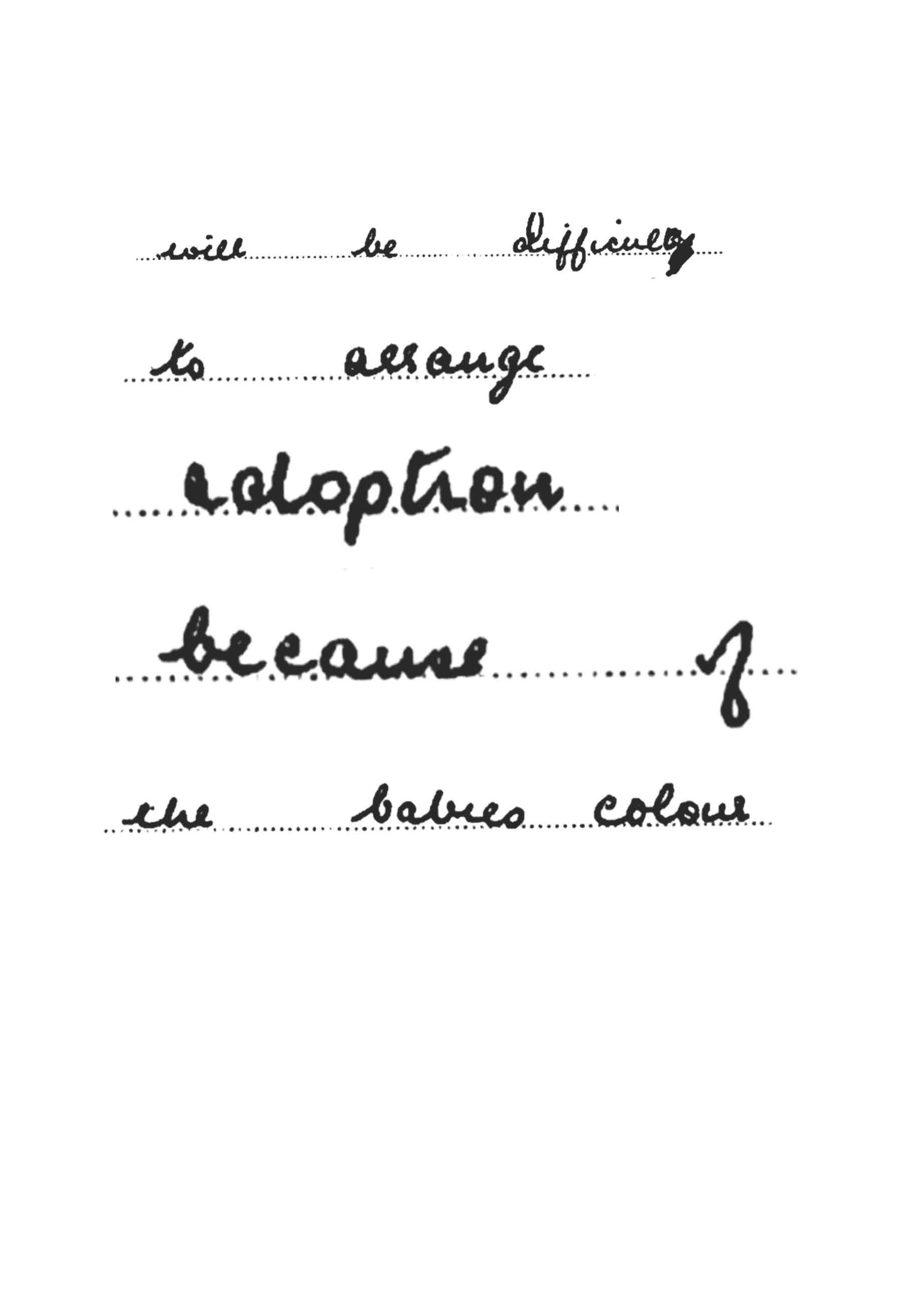
Page 42 from the book Hard to Place (2016)

“Untitled (Birthmark)” From the series Hard to Place (2016) Archival Pigment Print
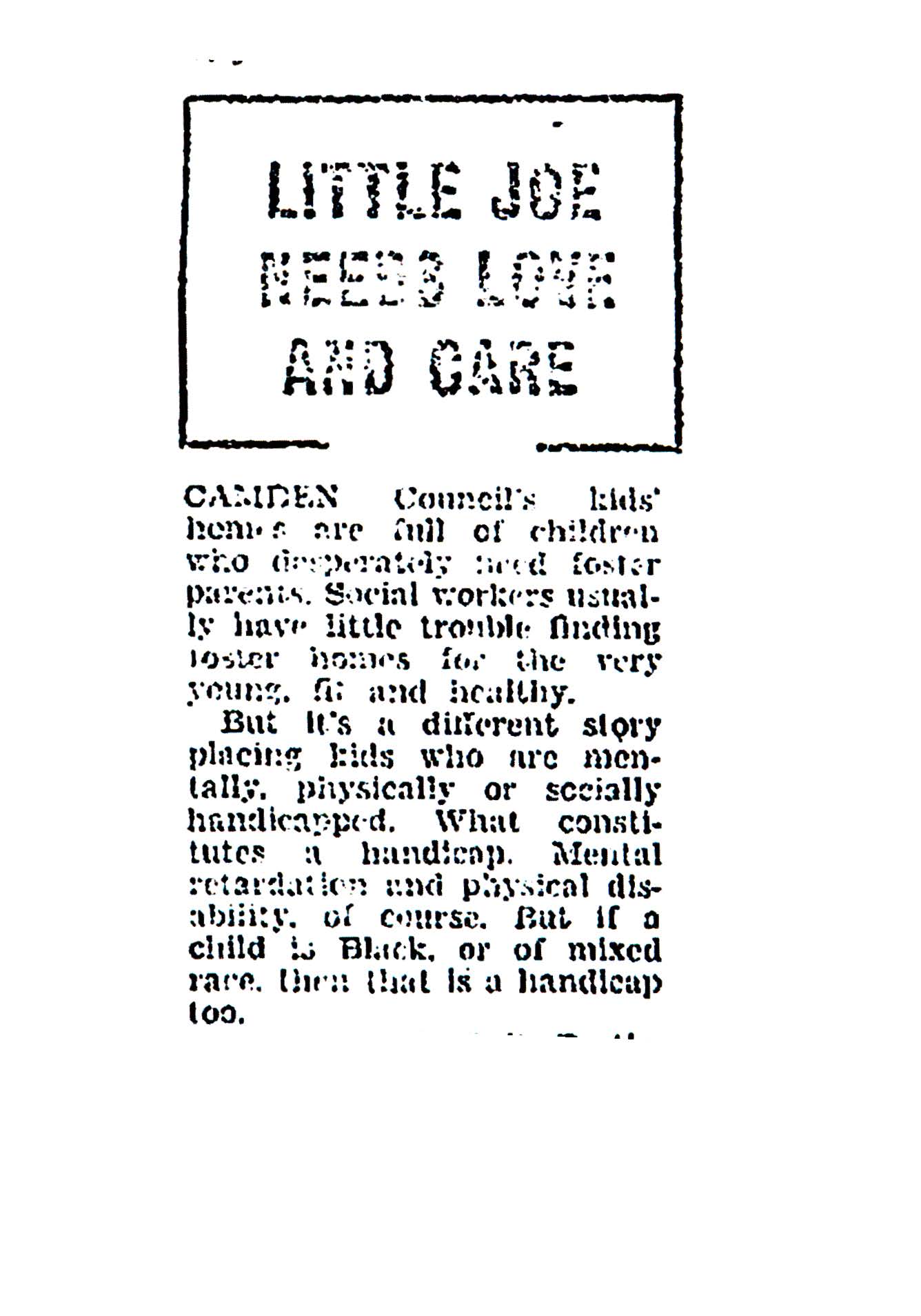
Page 46 from the book Hard to Place (2016) From the series Hard to Place (2016) Archival Pigment Print
Through still photography my work exposes hidden or denied histories, giving visibility to stories shaped by immigration, assimilation and the perceived failures of multiculturalism. I work primarily within documentary photography but have also employed archival photographs, texts and found digital imagery to create conceptual, constructed pieces.
My practice is research driven and I often use my own personal/family history as a place of reference because it is both what I know best and what I know little of. Driven by the Buddhist philosophy of interconnectedness by which I was raised, I make work because I don’t believe in coincidence. Always seeking to uncover seemingly tenuous connections, I believe the photographic image has the power to relate the personal with the universal.
My latest series, Hard to Place traces the journey of an orphan boy of Nigerian and Irish parentage growing up in 1960s/70s London. A “half-cast(e)” child in 1960s and ‘70s England, Joseph was considered “hard to place” amongst the mostly white, adoptive families. Consequently, Joseph was placed “in care” at eight different times from age three to seventeen.
Joseph is my husband, we met online in 2007. On our first date he nervously told me his lifestory, continuously pulling at his sleeves to hide the ink of bad decisions made during his teenage years as a black skinhead. That night he told me about how he was born in the UK to immigrant parents, eventually growing up in an orphanage located in the posh London neighborhood of Hampstead. We were both born on the 8th (of different months), both only children and we were both “mixed” with unanswered questions about our family origins…that night Joseph and I immediately connected and we’ve been together ever since.
As a wife, over the past six years I’ve witnessed Joseph become a father with little guidance and only an instinct of love. The little boy in the color, documentary images seen in Hard To Place is our son. As a photographer, my lens has captured tender and curious moments with my son and in these images he often becomes that precocious, yet lonely little boy I imagine his father was as a child. As a mother, I’ve developed the utmost compassion for Joseph’s mother and I can’t fathom the (inner and outer) struggles she endured as a single, Irish woman with a black child in a xenophobic and racist society.
Through the United Kingdom’s Data Protection Act of 1998, in 2013 Joseph Robert Cullen received two legal-sized books stuffed with photocopied files documenting the years he spent as an orphan. The documents include typed and handwritten text written by social workers observing both Joseph and his mother Maura aka Maureen who often needed financial and housing assistance. Combining confidential government documentation, archival photographs, personal possessions and documentary images, this series reveals the social and moral forces that denied Joseph his birthright to a family while imagining an alternate (albeit uncertain) narrative. This series includes photographic, archival material and other possessions belonging to Joseph’s parents which he inherited after their passing. The inclusion of these personal archives counters the inherent definition of the orphan child as someone who comes from nothing and no one.
The dominant narrative of mixed-race orphans is that they are all born of wars, the product of illicit love affairs (or rapes) between women and the soldiers that occupied their countries. Some popular examples of these “occupation babies” include those born during/post World War II in Japan and the Korean War. It’s interesting to note that although white soldiers fathered children (often at higher rates), the offspring of black soldiers were far more ostracized.
A relationship between two people is fostered and sustained not only by the love that each person has for one another, but by the support it receives from their community and others outside their union. Even the general social sentiment plays a role in validating their union, allowing for such simple pleasures yet symbolic gestures such as holding hands in public.
I’ve self published Hard To Place as a photography book and the first spread features a portrait of Joseph’s father on the left and his mother on the right. The reason why I chose the book form to represent this series is in relation to the family album or scrapbook, mediums meant to preserve memories. For me this pairing of parents was important to create as it is a familiar photograph found in family albums.
This coupling, preserved in photographic emulsion, has been a constant in the history of the medium. So much so that people who’ve been raised by both parents often take this kind of photograph for granted not realizing how many people worldwide do not have this visual affirmation of the love that created them. I don’t know why Joseph’s parents were never photographed together, but I do recognize the power of this formal arrangement (specifically in the shaping of a mixed-race identity) and have even replicated it on the walls of our home.
The orphan is a common human archetype. There have been many notable celebrities, world leaders, figures within classical history and religious scripture, in literature and even comic book heroes who began life as orphans. Yet there has been very little within popular culture, international news or the arts about ordinary children made orphan because of the strain of historical and everyday racist attitudes. We don’t often hear of the children abandoned by one or both parents because of the stress of discrimination from society and often their respective family members that has fractured their unions.
Alone and marginalized, these children bear the intolerable weight of their parent’s failed love and that of mankind’s dark, unsettled history with race. I’m not sure which hurts worse.
Questions for Further Consideration
Additional Reading
Essay on Hard To Place by writer Paula Kupfer
http://booklyn.org/events/qiana-mestrich-hard-to-place/
RESPONSE
Assemblages convey stories through their grouping and positioning of objects, and Qiana Mestrich’s work Hard to Place weaves the narrative of her husband’s past, present, and future through the lens of acute observation and love. The title, Hard to Place, references the difficulty of placing Joseph in adoption because of his mixed heritage, but also the title alludes to the physical ambiguity of the multiracial body. “What are you?” is a frequent question a mixed body hears because the ways our bodies present themselves make us hard to place as well. What struck me was the speculative elements of Mestrich’s piece, particularly how the piece fill the gaps where Joseph’s story is unclear. Through imagining a holistic narrative, the places where Joseph’s family story is incomplete is filled in with abstractions and the beauty of the everyday and mundane. The quotidian elements of Hard to Place show how Joseph’s story is at the same time very unique and quite ordinary.
-Dr. Alexandrina Agloro
Dr. Alexandrina Agloro is a game designer, community-based researcher, and media artist who believes in the possibilities of the decolonial imaginary using digital media as an emancipatory tool. She is an Assistant Professor of Interactive Media and Game Development at Worcester Polytechnic Institute. Find more about her work at http://agloro.org.

Sharon H. Chang’s inaugural book, Raising Mixed Race: Multiracial Asian Children in a Post Racial World, lays out a blue print that outlines the history of white supremacy and how it has corrupted the way people treat each other, specifically Mixed Race/ Multiracial and Multiracial Asian individuals. She develops an important foundation that provides a glimmer of hope for moving forward toward improving our future world, despite the powerful suppressive system before us.
The title might make you think it is a parenting book, and it is (or could be), but it so much more! The language/verbiage used in the book makes this potentially academic/research strong book accessible for those who might have the most questions…parents. Though this book has a focus on multiracial Asian children, it is not just a book for parents of multiracial Asian children. It is a book for all children of color…and even for parents of white children! This book is for anyone who comes in contact with children in any way. This means if you are a teacher/educator, a child care worker, do research with children or on race and intersectionaility…or if you are a parent, sibling, aunt, uncle, grandparent, or once was a child. This book is for everyone!
The book is based on Chang’s interviews with 68 parents of 75 young children living in Washington State. She does not go into detail about her recruitment and method, however she does discuss this in my recent interview with her (see Part 1 of 2 below). She intertwines her findings with current and historical events, existing scholarly research and reports, her expertise in tracking dialogue across social media, her own multiracial Asian experience and more.
The focus is on children from 0 to 5 years old. This is an age that has been neglected in most parenting books and research with a multiracial focus. This is also an age during which many parents think that their children do not recognize/see race; however Chang shows us that they absolutely do. Young children are learning from the subtle and often unspoken systematic racism that is infused throughout every aspect of our society.
Chang makes it clear that the understanding of race begins in the home. In a world that is fearful to discuss how white supremacy has been engrained into society and families generation after generation…it is time families start having these difficult conversations. Chang warns that race is not easy to discuss, but essential and does not have to be done alone. It can be done through community. Her last chapter provides specific examples of how to address race in the community, school, and home.
This is the first book that I have seen, that looks at racial identity development, and puts systematic racism and white supremacy where it belongs…. at the beginning and linked over and over again to the end. To understand and address race issues with our children, we must begin with its origin story. When attempting to comprehend the lens in which race issues are created, we must understand the frame in which that lens is held together – white supremacy. Chang tells it like it is. She lifts the curtain on age-old white ideas of race, breaks down history, language and concepts that have created divisions between people who look different or do not follow the prescribed norms. For example, she breaks down how the trending term microagression was created from a white lens and points out there is nothing small or mirco about them! She deconstructs terms used in medical spaces, such as “Mongolian Spots” that have racist origins; and many individuals have just come to believe that is what they are called (See Part 2 of 2 below for more on this). Additionally, she provides a fantastic response to the common question/idea “But aren’t we all mixed?” in one of the most eloquently written explanations I have seen. Watch Part 2 of 2 below to hear about how she responds to the question and her new elevator response to this question!
The book is coming out just in time for the holidays, and will make a great gift. It should be on everyone’s 2016 reading list! You can order the book on the publisher site or on Amazon.
Be sure to join Sharon on December 11th for her Facebook launch party. She will be partying all day and giving away some great prizes. Don’t miss it!
You can find the Multiracial Asian Families community and blog page on Facebook, the book page on Facebook. You can fin her on Twitter @mutliasianfams, Pinterest, or on her blog MultiAsian Families.
Watch my recent interview with Sharon!
Part 1 – She shares her mixed roots story, how the book came to be and more!
Part 2 -We discuss content from the book including: “Mongolian spots”, miss-education and the need for reeducation around racist terms, how to respond to -“Everybody is Mixed”, Culture vs. Race, Anti-bias curricula, learning environments and more.
Chandra Crudup, PhD, MSW is a board member and co-founder of Mixed Roots Stories. She is the Vice President of MAVIN and the Production Manager for One Drop of Love. Chandra is full time Lecturer and Faculty Associate Coordinator in the School of Social Work at Arizona State University. She has over six years of practice experience in K-12 schools. Her research interests are centered on multiracial identity and interracial relationships. Her research utilizes video technology as a qualitative data gathering tool. She is also interested in using the arts as a medium to build positive self-esteem in youth.
The University of Maryland College Park’s interns from the Office of Multicultural Involvement and Community Advocacy celebrate Loving Day year round. They came up with a visual campaign to educate their peers about what Loving Day is all about. Students give a balloon and lollipop with the story of the Lovings attached and are asked to tweet and Instagram photos with the balloons before passing them on to another student. These photos are from 2014 and 2015.
The Community Organizing Students Interns (COSI) were asked by Naliyah Kaya, PhD, the Coordinator of Multiracial & Multicultural Student Involvement & Advocacy, if they knew how the Lovings were. They were then asked to research it and come up with a way to share it and celebrate the day with their peers. We love what the COSIs came up with!
Office of Multicultural Involvement & Community Advocacy (MICA)
Adele H. Stamp Student Union @ The University of Maryland College Park
Look at that love being passed from student to student!
Thank you Naliyah and the COSIs for sharing with us how you Visualize Loving Day!
Over Memorial Day weekend, the Mixed Roots Stories team gathered for our annual retreat. We spent two days evaluating where we have been and planning where we want to go.
We spent time looking at our mission and vision and decided it needed slight revising to more accurately represent what we do. This is what we came up with:
Revised Vision
A world that recognizes how it benefits from otherness, one that both celebrates and challenges identity categories in order to create more liberatory possibilities for our collective futures.
Revised Mission
Supporting and advocating for diverse Mixed communities through the power of sharing stories. We seek to act as a liaison, creating space between storytellers across academic and non-academic communities, and international and national contexts.
We began planning for the upcoming CMRS events. We also finalized our plans for this year’s Loving Day online event, and began planning for 2016 and 2017 Loving Day events.
We were excited to have our new board members Kaily Heitz and Stephanie Sparling Williams join us! They bring a wealth of experience, knowledge and energy to the team and are launching new student, community, and organization outreach as well as Arts & Education programing.
The highlight of the retreat was working on a Loving Day Mixed Media project, which was designed by Stephanie. You can join us in Visualizing Loving Day.
Stay tuned for the roll out of this and many other programing to come!
Happy Memorial Day Weekend Friends and Followers!
This weekend the MXRS team got together in preparation for our commemoration of Loving Day 2015: Visualizing Loving Day. This year we thought it would be fun to celebrate the radical love of Richard and Mildred Loving, as well as the pivotal Supreme Court Ruling allowing interracial couples to marry by creating a mixed-media collage. Check out what we did and share your own Visualizing Loving Day projects, activities, and stories!
Materials:
Printed Copy of The Loving’s Story (Print story from www.lovingday.org : here)
Small Canvas
1 Pack of Sticker Numbers & Letters
1 Tube of Paint in a Color of Your Choice (acrylic works best, but tempora will work too!)
Sponge brush or old dish sponge
Decoupage or Mod-Podge
Glue Stick
Scissors
Old Magazine
How to:
Step 1: Read the Loving’s Story. If you are doing the project with friends and family members, discuss what this story means for you and why learning their story is important. If you are doing the project with children consider “The Case for Loving: The Fight for Interracial Marriage” by Selina Alko.
Step 2: Cut or tear images, colors, interesting words, and/or textures from the magazine. Collage pieces together with quotes from the Loving’s story and adhere to your canvas using the glue stick. TIP: Concentrate color and meaningful text in the center of the canvas. Bright colors and unique textures work best.
Step 3: Once you are satisfied with your collage, use the Mod-Podge to seal your design. Let this dry completely (at least 20 minutes).
Step 4: Once your collage has dried use the sticker letters to spell “Loving 1967,” or “Loving Day 1967”.
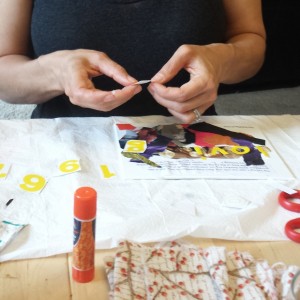

After the stickers are secured to your collage in a place of your choosing, use sponge to dab paint over your collage, covering the letters completely. Let dry.
Step 5: After the paint has completely dried, carefully peel the letters off of the canvas.
That’s it! Now display your collage momento for friends, family, and guests to see in order to continue the conversation year round!
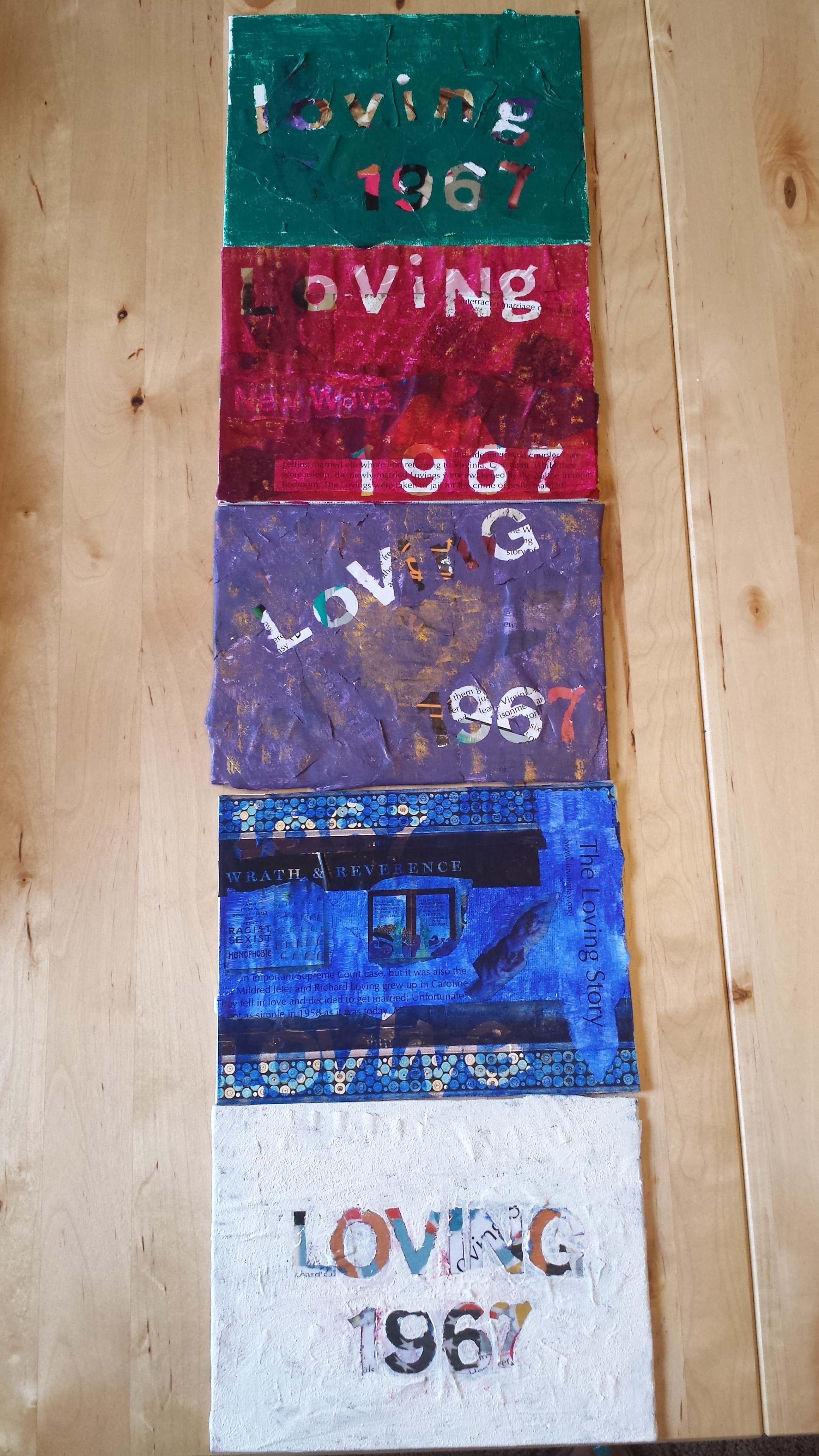
Happy Loving Day from MXRS!
Be sure to send us pictures of your Loving Day Mixed Media Collages!
Do you binge watch shows and movies online? We do! We found these 6 programs on Netflix that feature mixed roots discussions. Check them out, critically discuss them with others, and learn more! We have provided some questions to consider while watching each one, as well as further reading/resources to keep you thinking and critically looking at mixed roots stories!
We are just getting started with our Netflix recommendations, and we’d love your contributions. What films/TV series have you seen that are relevant? What critical questions can we explore when/after watching them? What mixed identity groups aren’t represented here? Send us an email to info@mixedrootsstories.org.
From Trevor Noah:
Trevor Noah brings to film his unique brand of observational humor born of his mixed-race experience under the South African apartheid system. In his most recent stand-up special Trevor weaves together compelling stories with wicked smart observations on the inanity of the racial construct in the United States. The theme of Trevor’s presentation is his journey to America, because he believes he can be fully black here. A clip from Gabriel Iglesias StandUp Revolution:
Mixed Roots Stories Questions to consider while watching:
1) Can humor be an effective storytelling tool for change, especially on matters of race, culture and ethnicity?
2) As you watch Trevor Noah: African American, do you think his point-of-view effectively challenges our racial assumptions?
3) How does idea of mixed/blackness transfer between countries?
4) What does it mean to be “fully black?”
For Further reading/discussion:
Nancy Goldman makes an argument in her paper that humor can be a powerful tool for social change – Comedy and Democracy: The Role of Humor in Social Justice.
From abcfamily.go.com/shows/the-fosters:
The Fosters is a one-hour drama about a multi-ethnic family mix of foster and biological kids being raised by two moms. Stef and her partner Lina have built a close-knit , loving family with Stef’s biological son from a previous marriage, Brandon, and their adopted twins Mariana and Jesus. But how will things change when they meet troubled teen Callie and her little brother Jude?
Mixed Roots Stories Questions to consider while watching:
1) What responsibilities do parents raising kids from different cultures than themselves have in teaching their children about those cultures?
2) Lina identifies as biracial – how does this affect her relationship with her partner, Stef, and her children? Do the conversations she has with her African American mother surprise you, or not? Why?
For Further reading/discussion:
Lisa Marie Rollins is a TRA (TransRacial Adoption) Activist. Her blog, poetry and live performance provide lots of insight into the TRA experience. Learn more here: https://birthproject.wordpress.com/
From lovingfilm.com:
The Loving Story, a documentary film, tells the story of Richard and Mildred Loving to examine the drama, the history, and the current state of interracial marriage and tolerance in the United States.
Mixed Roots Stories Questions to consider while watching:
1) What do you think were the most compelling arguments made by the Loving’s legal team to persuade the Court to rule in their favor?
2) What are some of the other Supreme Court decisions that have had a strong impact on the mixed community?
For Further reading/discussion:
For a more in-depth analysis on Loving v. Virginia and the people involved, see Race, Sex and the Freedom to Marry by Peter Wallenstein (mixedracestudies.org).
NBC recently aired the final season (season 6) of Parenthood. You can catch up/re-watch the first 5 seasons on Netflix. “Parenthood bravely and delicately take on the complexities of family life leaving viewers full of emotion after every episode like all good comedy/drama stories should! In addition to other major topics (cancer, post traumatic stress disorder and more), this series follows an interracial marriage and their child, the process of a transracial adoption and has explored an interracial teenage dating situation.” (https://mixedrootsstories.com/parenthood/)
A few key seasons/episodes:
Season 2 – Crosby and Jasmine (an interracial couple) are trying to figure out how to raise their child and if they are going to work on their relationship or continue to be separated. Addie begins dating Alex, and her parents begin to question the relationship, pushing her to move in with her grandparents. But are they questioning it because he is a different race or because he has a history of substance abuse?
Season 3 – Crosby and Jasmine work out their differences. Julia and Joel interracially adopt a son.
Season 4 – Crosby and Jasmine have a discussion with their son about race (Episode 4). Julia and Joel take on the challenge of raising their adopted son.
Season 5 – Crosby and Jasmine expand their family with a new baby girl. Jasmine’s mother has ideas of how religion should play a role in the families life.
Mixed Roots Stories Questions to consider while watching:
1) If your child brings home a partner with a mixed background (different race, culture, religion, gender orientation, country of origin, etc.) than what you expected, would you be concerned? Why? Would you voice your concern? How?
2) In Season 4 Episode 4 Crosby realizes there are situations his mixed race son will have to deal with that he won’t be able to protect his son from. How would you or do you answer these/similar questions?
For Further Reading/Discussion:
Raising Biracial Children by Kerry Ann Rockquemore & Tracey Laszloffy, takes on identity development with mixed-race individuals within a historical context and creates a framework to assist parents, educators, social workers, counselors and anyone who works with multiracial individuals.
Donna Jackson Nakazawa wrote Does Anybody Else Look Like Me: A Parent’s Guide to Raising Multiracial Children out of frustration in a bookstore, when she was unable to find a book that provided guidance on how to address the situations she was facing in her mixed roots family.
The appendix of both books have lists of useful resources!
Set in 1930, western Australia, Rabbit Proof Fence tells the true-life story of two “half-caste” girls who were taken from their families, by the government, and placed in a camp where they are trained to be servants for white families. The hope is for these children to end up marrying white Australian men so their aboriginal blood can be bred out. The girls escape and take off on a journey to find their family.
Mixed Roots Stories Questions to consider:
1) The United States is not the only country that has had a history of hiding unspeakable events around race/color differences. What value, if any comes, from being aware of a global mixed roots history?
2) In what ways do institutions continue to support and enforce the separation of different people?
For Further Reading/Discussion:
“My Place” by Sally Morgan
“Daughter Dies With Her Story Still Incomplete”
In this PBS 4 episode series, “Prof. Henry Louis Gates Jr. Discusses the massive influence of African ancestry on the history and culture of Latin America and Caribbean.” He goes to: Mexico, Peru, Brazil, Cuba, Haiti, and the Dominican Republic.
Mixed Roots Stories Questions to consider:
1) As Gates interviews each country, how does his North American views of “Black” influence his questions, interactions, and expectations on what answers he is looking for in South America?
2) Both North and South America have a history of slavery with “Black” or African people. How are these histories similar and/or different? What lessons can be gleaned from both continents mixed roots histories?
For Further Reading/Discussion:
“Black In Latin America” by Henry Louis Gate Jr. http://www.mixedracestudies.org/wordpress/?p=31565
“Latining America: Black-Brown Passages and the Coloring of Latino/a Studies by Claudia Milian
http://www.mixedracestudies.org/wordpress/?p=25463
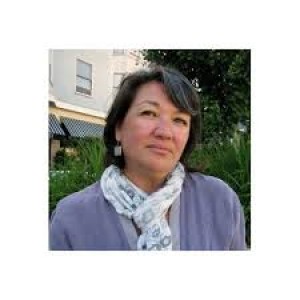 Margaret Bacon Schulze is a freelance writer of Okinawan/Anglo heritage. Her first book of fiction, Yuletide Angels, was published last year by electio Publishing. It’s the story of a mixed race family enjoying the many customs and traditions of the Yuletide season. A celebration of many cultures and faiths!
Margaret Bacon Schulze is a freelance writer of Okinawan/Anglo heritage. Her first book of fiction, Yuletide Angels, was published last year by electio Publishing. It’s the story of a mixed race family enjoying the many customs and traditions of the Yuletide season. A celebration of many cultures and faiths!
More on the book:
Dina is searching for a special angel to top her Christmas tree, one that looks like her Japanese, Irish, German, and Mexican sons. Her husband Julio struggles with his disdain of holiday hype.
Would you like to order this book? Here’s a link for more info: http://electiopublishing.com/index.php/bookstore#!/~/product/id=31016183
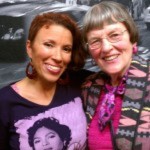 Thanks so much to Kaypri for letting us know about her mother’s book “I Didn’t Know What I Didn’t Know: A Southern White Woman’s Story About Race.” You can learn more about this moving and important story here: www.dorothystory.com – why not make it a holiday gift for a mother or grandmother on YOUR list!?
Thanks so much to Kaypri for letting us know about her mother’s book “I Didn’t Know What I Didn’t Know: A Southern White Woman’s Story About Race.” You can learn more about this moving and important story here: www.dorothystory.com – why not make it a holiday gift for a mother or grandmother on YOUR list!?
Here’s the description Kaypri sent us:
Dorothy Hampton Marcus is a Civil Rights Activist, truly ahead of her time. She jumped into Race Relations before it had a name, (in the fifties), and was one of very few Whites to do so. A Winston-Salem, North Carolina native, she grew up in the Jim Crow Era, not fully knowing what that really meant. In her undergrad years at Meredith College in Raleigh she had her first one-on-one inter-racial experience which this progressive all-womens school arranged. This event changed her life and by the time she graduated, she’d found a new passion. Determined to enlighten others with what she had begun to know, she found answers in the most unexpected places witnessing history along the way. For the next two decades she worked in a succession of “Human Relations” jobs throughout the U.S. putting off marriage and motherhood to do so. Even after marrying “late” at age 40, she never gave up on improving civil rights for all people. She was determined to share what she now knew well past her retirement when she started writing this story. She dedicated herself to finishing the book right up until the onset of dementia made it impossible for her to write another sentence. It was at that point that I realized it was up to me to pick up the baton which I started by completing the first draft of her book for her 80th birthday in 2012. It took me nearly two more years to flesh it out and publish it, adding my Daughter’s Notes along the way. I am truly proud to share my mother’s story with the world!